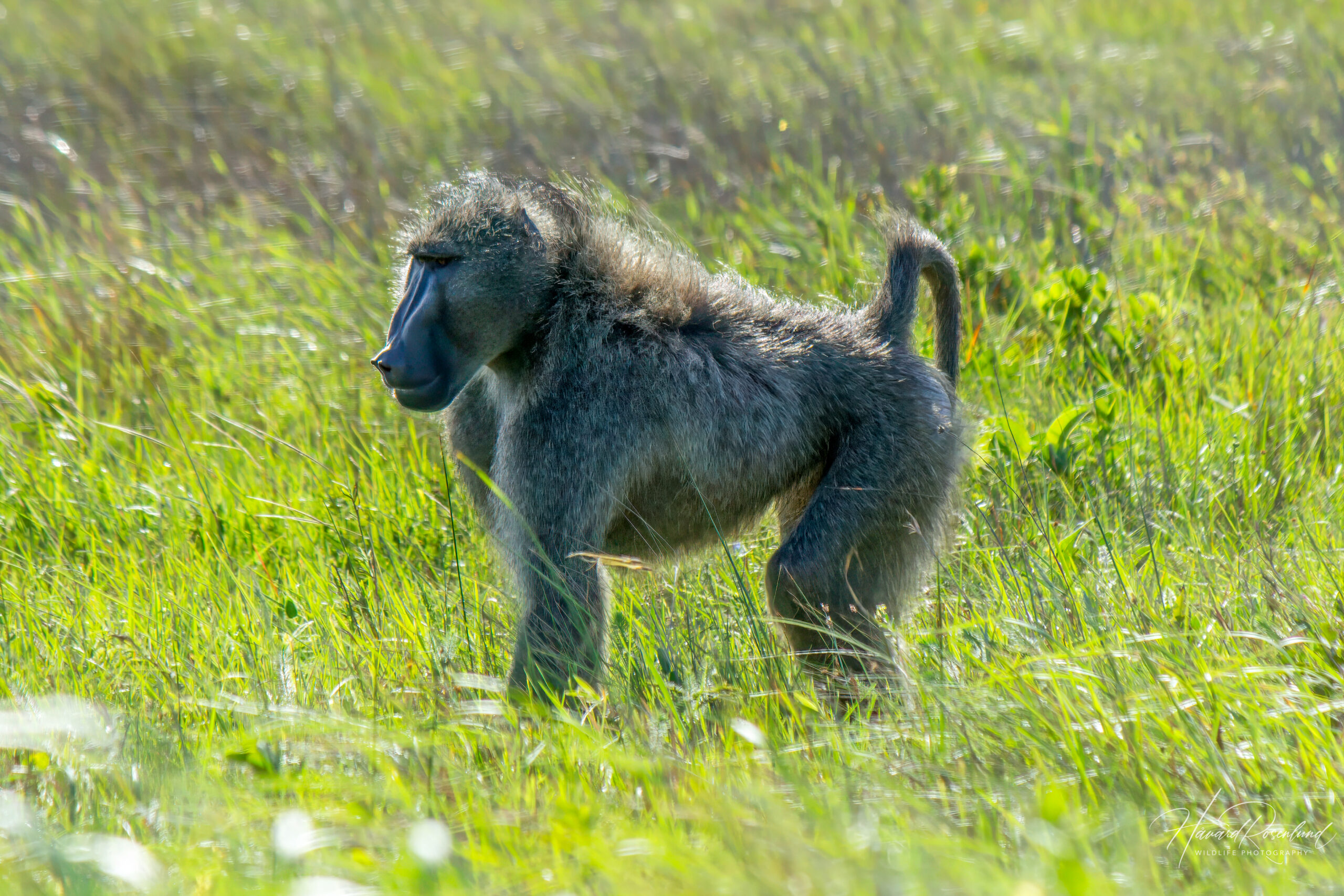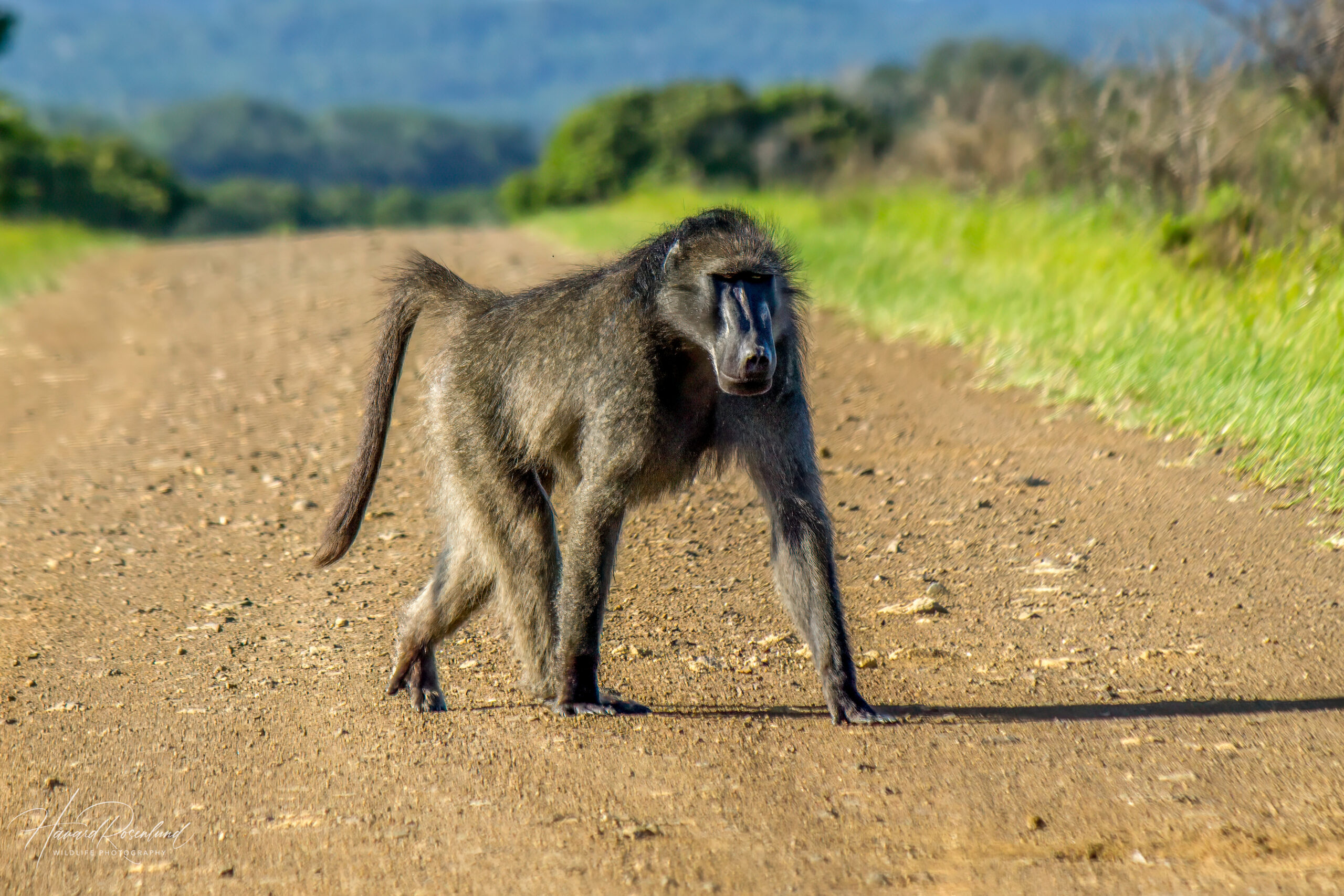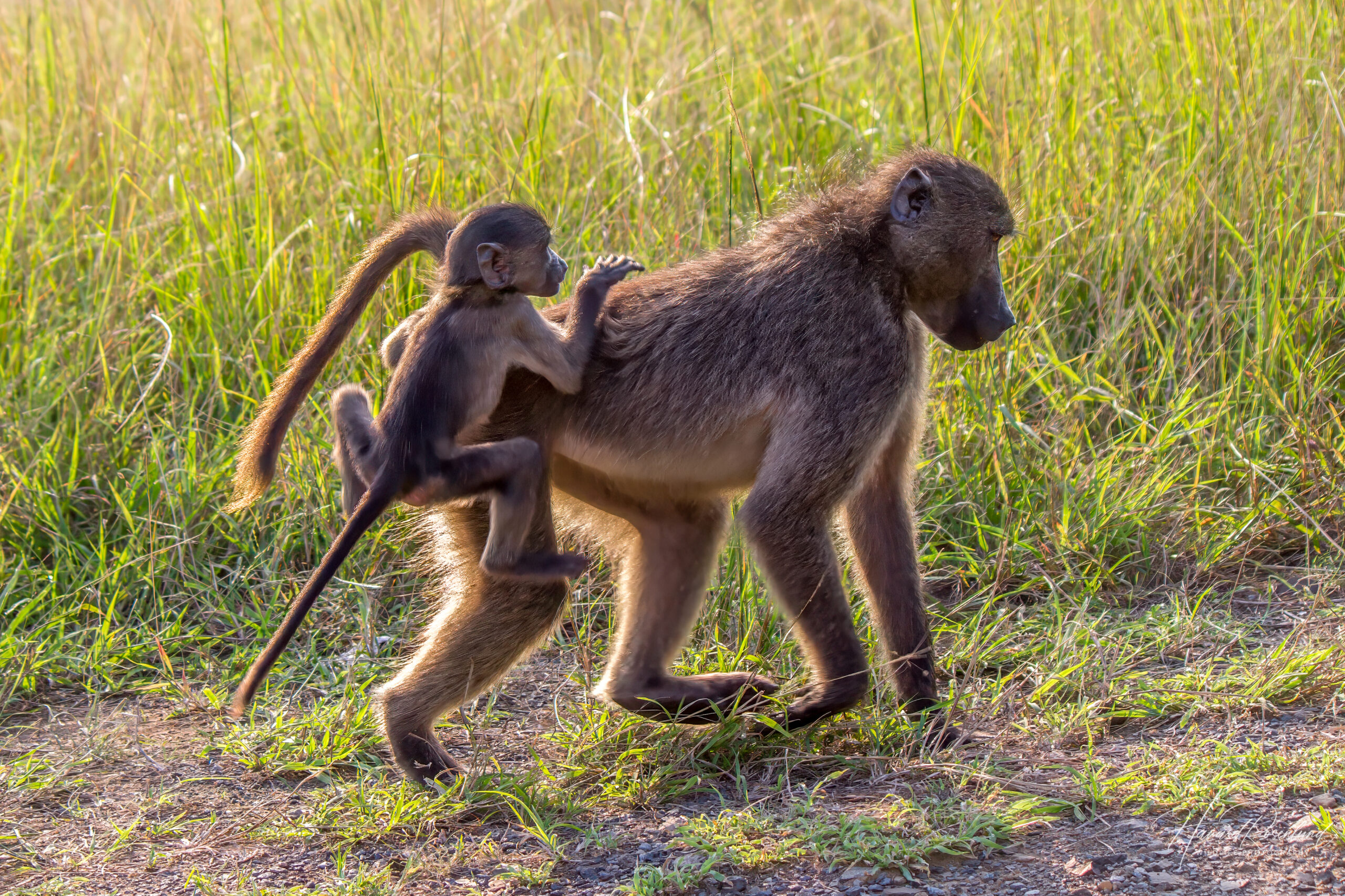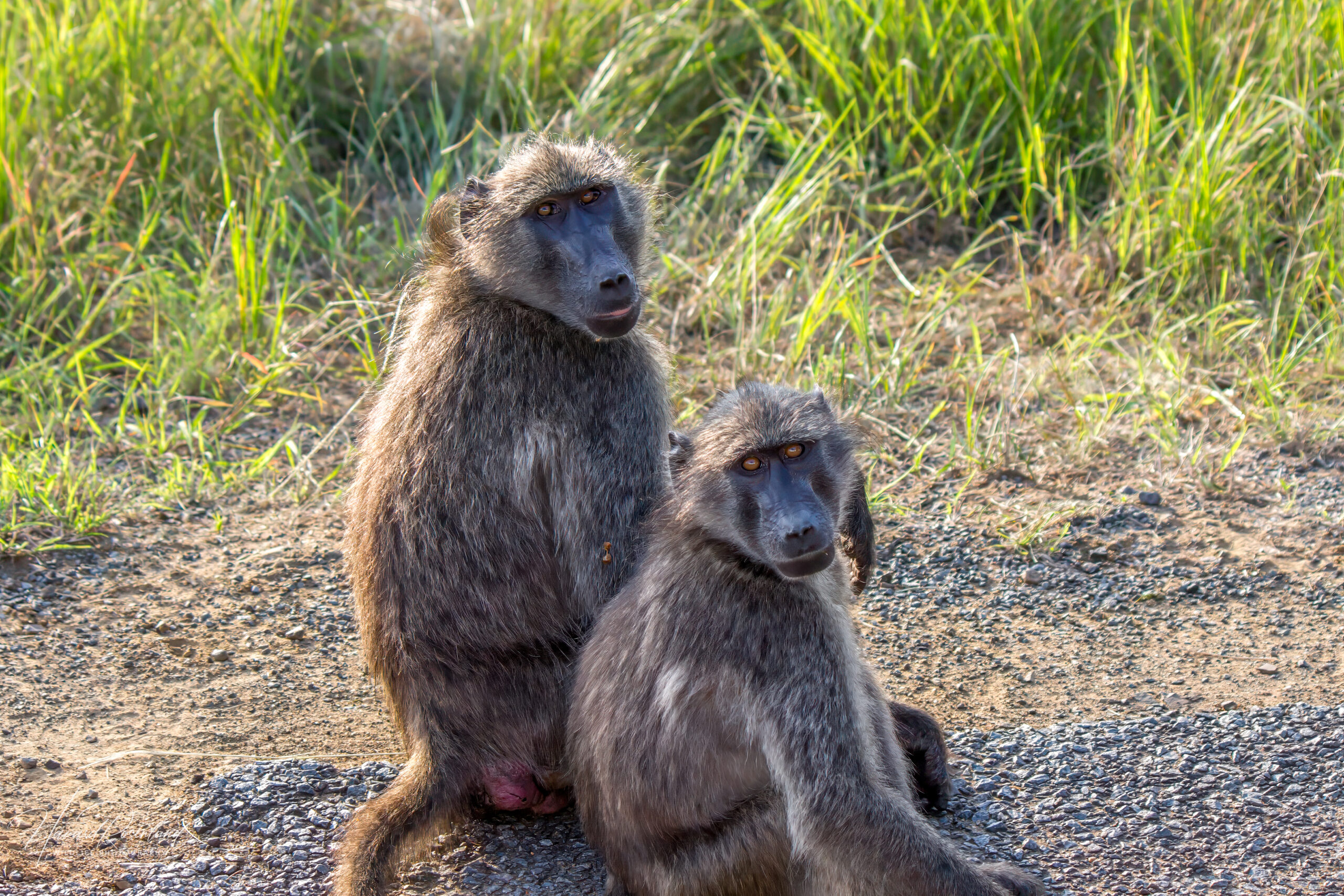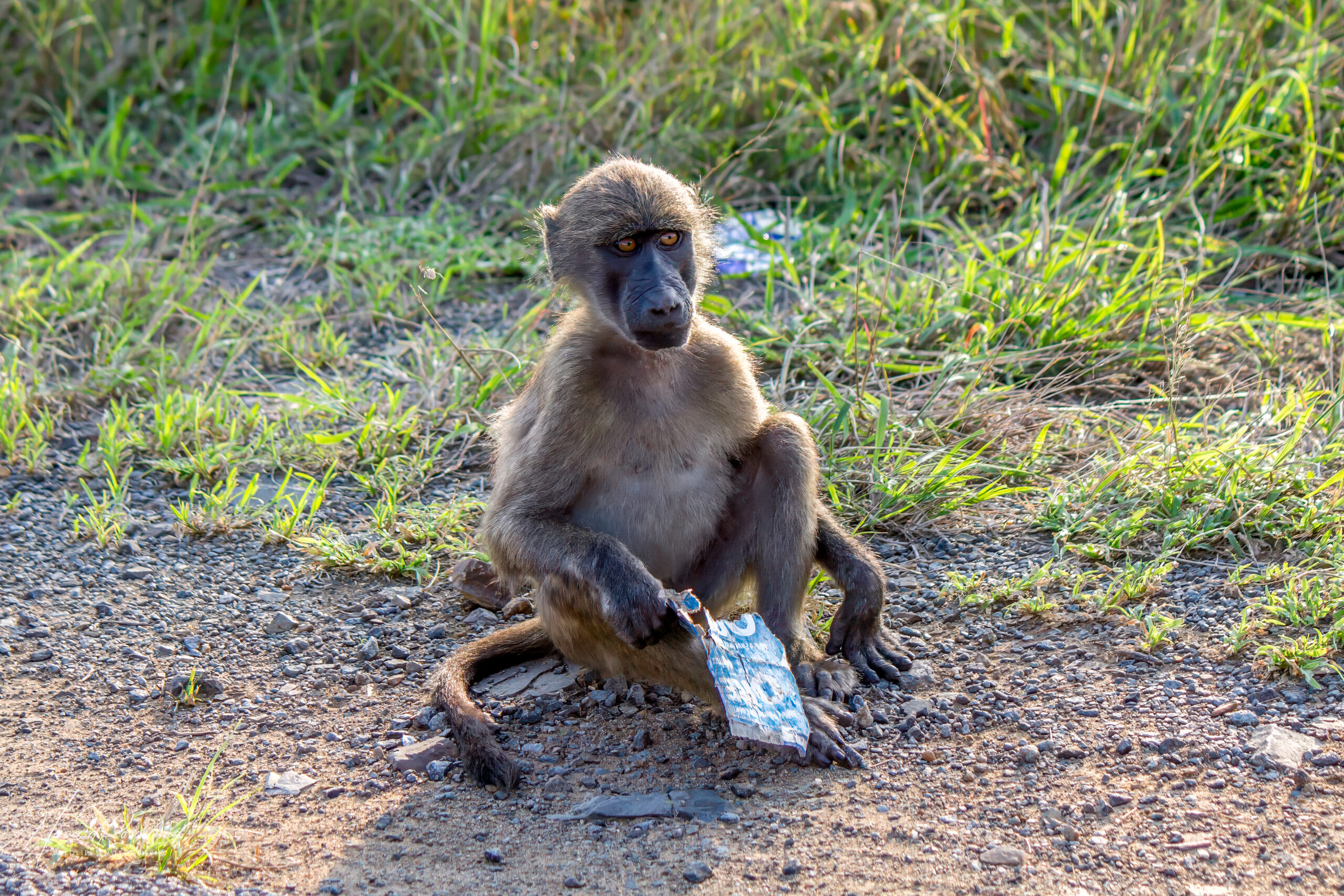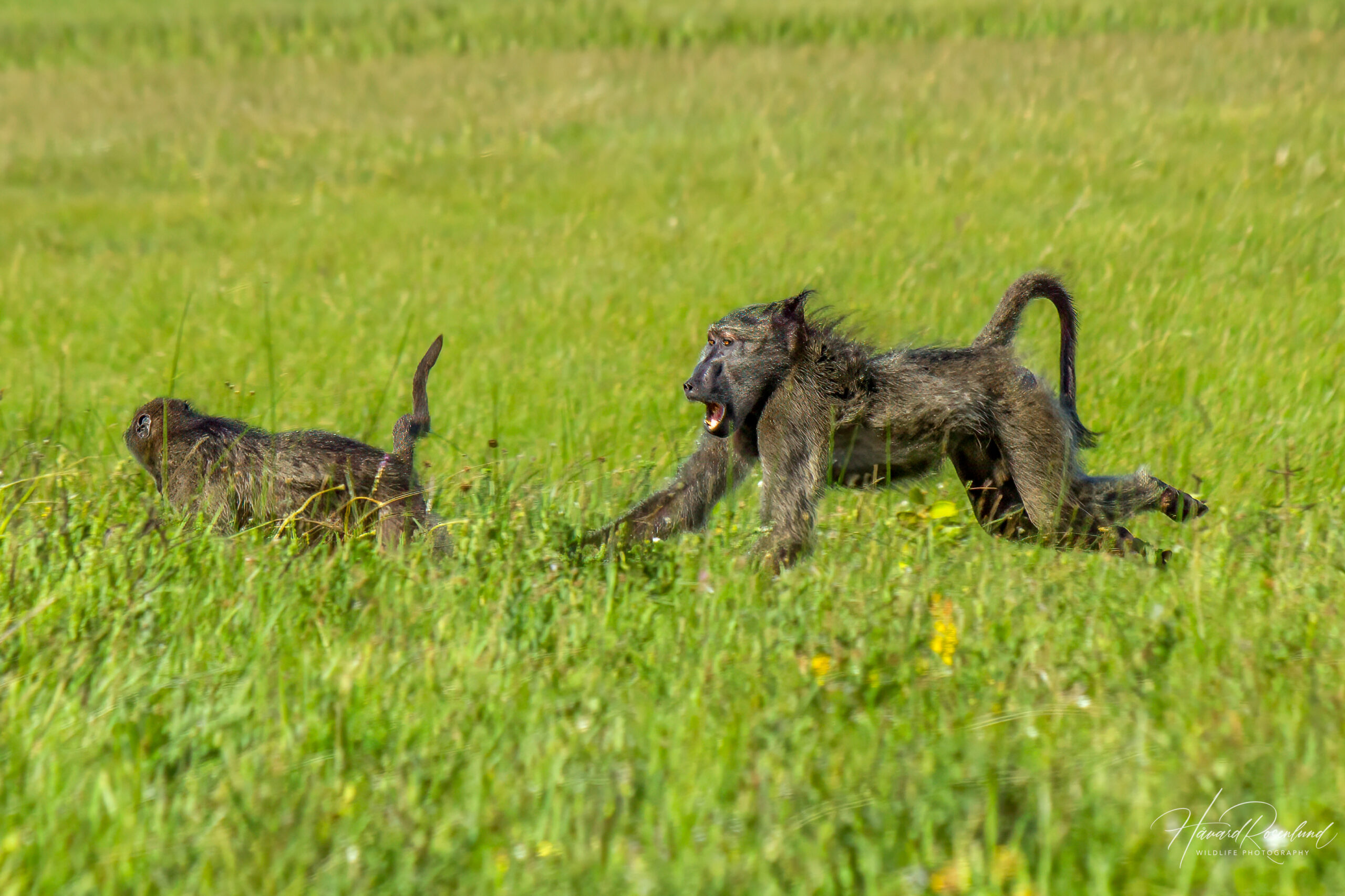Description
The Chacma baboon, or Cape baboon (Papio ursinus), is the largest species of baboon and one of the largest monkey species in the world. With a body length reaching up to 115 cm (45 in), it is perhaps the longest monkey. Males are much larger than females and weigh 21-45 kg (46-99 lb), while females only reach 12-25 kg (26-55 lb). They are dark brown to grey in color and have a distinct long and downward-sloping face. The male Chacma baboon does not have a mane like some other species, such as the similar olive baboon (Papio anubis) in east, central and west Africa.
Diet & habitat
Chacma baboons live in various habitats. They are found in dry areas, like the Kalahari Desert, as well as colder alpine environments, such as the Drakensberg Mountains in South Africa. Common habitats are savanna woodlands and forested areas. They generally stay close to water sources and need large trees, cliffs, or hills as secure sleeping spots at night.
Chacma baboons are omnivores and eat most things edible. They prefer fruits, but will also eat insects, herbs, grass and smaller animals. They can hunt, but will rarely do so, and will more often scavenge on large dead animals. Because of food availability they often get close to human environments but will normally run away from humans. If they are fed, they will associate humans with food and will over time become aggressive towards humans to get more food. This has happened many places, and especially the population in and around Cape Town has become increasingly violent and dangerous towards humans because of tourists feeding them. These baboons no longer see people as a threat but as easy targets for food.
Social behavior
Chacma baboons live in large groups called troops. A troop will have multiple males, females and their young. Sometimes smaller groups with only one adult male and several females are formed. Both sexes have their own internal troop hierarchy. One troop will have one dominant male as a leader, who can be overthrown by other males. Females are born into a set place in the hierarchy and will automatically be on the same level of dominance as their mother. New males that take over a troop will often commit infanticide to be able to mate with the females. Members of a troop communicate with each other through complex behaviors, such as touch, facial expressions, vocalizations, and body language.
A unique aspect of Chacma baboon social behavior that differs from other baboon species is the formation of friendships. A friendship is a close relationship between a male and a female and does not happen between same-sex individuals. The female would often be lactating when such friendships are initiated. It is often believed that this male is the father, but since females are promiscuous and mate with several males when in heat, the identity of the father is not always certain. Sometimes females will fight over a male and the female with highest ranking will often get to befriend him. One of the main reasons for doing this is to have protection in case a new dominant male takes over, as he could potentially kill her offspring. Research has shown that stress levels are much higher in lactating females without a male friend than those who have one when a new male takes over a troop. Stress levels remains the same for the females without offspring.
Status
The Chacma baboon is divided into two subspecies across southern Africa and none of them are under immediate threat. They have been negatively influenced by being too close to human settlements. This has caused accidental deaths and targeted killing. It has also influenced the troop structures, which have made them act less natural. The aggressive population around the Cape Town area is the only protected population of Chacma baboons, as their habitat has dwindled, and they keep getting persecuted by man. Even though a lot of people like baboons; want to interact with them and watch them play, it is never a good thing to approach them directly or feed them. Ultimately, both us and the baboons will fare a lot better if we leave them alone. The species is listed as least concern on the IUCN’s Redlist.





